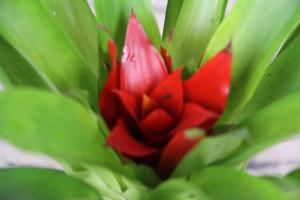How Far Apart to Plant Olive Trees for a Hedge
If you're thinking of planting an olive hedge, deciding how far apart to space the trees is a critical consideration. Olive trees are a popular choice for hedging due to their hardiness and attractive gray-green foliage. Here are some things to keep in mind when it comes to spacing your trees for optimum growth and aesthetics.
Spacing Considerations
The appropriate distance to space olive trees will depend on several factors, including the variety of olive tree being used, the desired height and width of the hedge, and the soil and climate conditions in your area. Typically, mature olive trees can reach heights of up to 30 feet and widths of up to 20 feet.
If you want your hedge to have a formal appearance with dense foliage from the ground up, you will want to plant the trees closer together. A more open, informal hedge may benefit from wider spacing. A good rule of thumb is to space the trees at least half of the anticipated mature width of the tree apart from each other.
If you're not sure how to space your trees, it's always a good idea to consult with a local nursery or experienced landscaper in your area who can give you specific advice based on your unique circumstances.
Factors to Consider
The spacing of your olive trees will also depend on the variety chosen. Varieties that are typically used for hedging, such as Arbequina, Koroneiki, and Manzanillo, have smaller mature sizes and are generally easier to keep trimmed to the desired height and width. Varieties that reach larger mature sizes, such as Mission, should be spaced further apart to avoid overcrowding.
Your soil and climate conditions will also influence how close together your olive trees should be planted. If your soil is poor or your area experiences dry conditions, it's best to space your trees further apart to allow them greater access to nutrients and water.
Maintenance Considerations
Once you've planted your olive hedge, regular maintenance is the key to keeping it healthy and attractive. Proper pruning is essential for keeping the height and width of your hedge within the desired range. Olive trees respond well to pruning and can be shaped in a variety of ways to suit your specific aesthetic preferences.
Regular irrigation is also important, especially during times of drought or high heat. Young olive trees need to be watered more frequently until their root systems are fully established.
Finally, be sure to fertilize your olive hedge on a regular schedule to ensure that the trees are receiving the nutrients they need to thrive.
In Conclusion
When it comes to spacing your olive trees for hedging, there are several factors to consider. The variety of olive, your local climate and soil conditions, and your desired aesthetic all play a role in determining how far apart to plant your trees. With proper care and maintenance, your olive hedge can provide you with years of beauty and enjoyment.

 how many times do yo...
how many times do yo... how many planted tre...
how many planted tre... how many pine trees ...
how many pine trees ... how many pecan trees...
how many pecan trees... how many plants comp...
how many plants comp... how many plants can ...
how many plants can ... how many plants and ...
how many plants and ... how many pepper plan...
how many pepper plan...






























